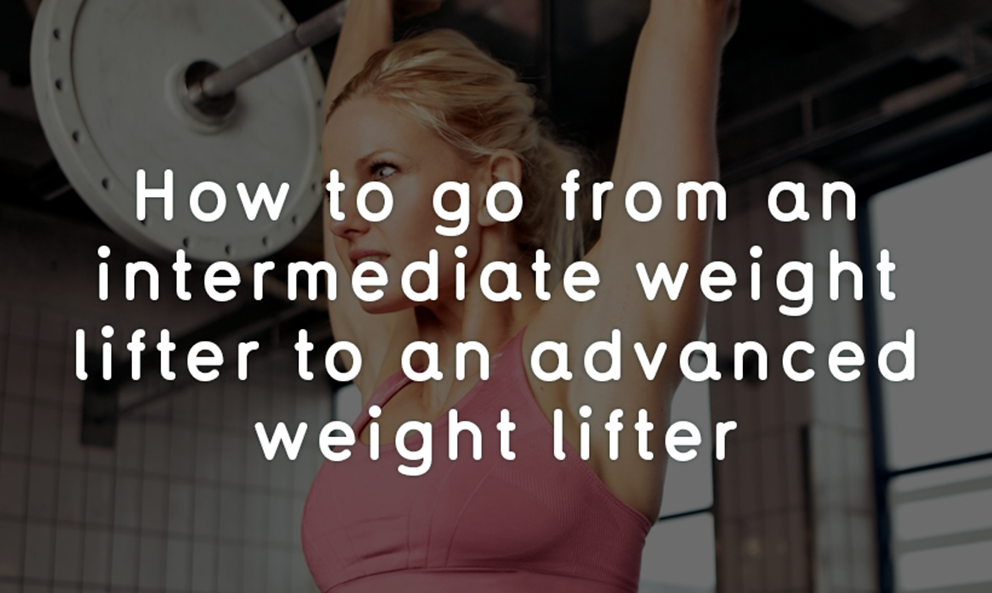How to go from an intermediate weight lifter to an advanced weight lifter

If you’ve been weight training consistently for at least six months, you will have learned about the important aspects of training. You’ll know about developing good technique and focusing on nutrition. You will know that to see results, you have to put in the hard work by following a structured training programme. If this sounds like you, then it may be time to step things up and take your bodybuilding to the next level. If it’s not, then identify which level you are at and progress from there.
The different levels of lifters:
Novice
If you have never built any muscle or strength you are a novice. You will need advice with technique and nutrition.
Beginner
If you’ve been going to the gym for a few months you are a beginner. You will have developed your form, understand the exercises and various weights. You will be starting to build muscle and strength. Beginners generally won’t bench press more than 135 pounds, squat more than 185 pounds or deadlift more than 225 pounds.
Intermediate
To be an intermediate lifter you will have a good knowledge and understanding about nutrition, adapting training and developing technique. You will have noticed results in your physique and gains in muscle mass. If you’re at this level, start to focus on adding extra training volume, but do it slowly to reduce the chances of injury. As a guide, intermediate lifters general bench press 275 pounds, squat 345 pounds and deadlift 405 pounds.
Advanced
To be an advanced lifter you will be at elite or near elite level in powerlifting, or if you’re a bodybuilder, near your natural genetic muscle building potential.
Making your routine more challenging
To progress you will need to increase the intensity of your workouts and follow your programme. Focus on technique by adding a few exercises that really challenge you. When you introduce a new exercise make sure you lower the weight until you have mastered the technique. Do not neglect any muscle groups.
Top tips
Squat in flats
Lifting shoes are popular for squatting, but it’s also important to build and maintain your own mobility. Squatting in flats as often as lifting shoes can make a big difference.
Increase volume as well as the weight of what you’re lifting
Don’t just focus on the top-end weight. By increasing volume as well as weight, you’re likely to maintain good technique throughout the workout. You’ll also be doing more work of a better quality, which is a great stimulus for muscle growth.
Diet and nutrition
Whatever stage of bodybuilding you are at, diet and nutrition is really important to get the most from your training. You will only see results if your diet is well structured. Protein, such as whey protein, is essential if you are weight training. Think about what you eat before and after a workout. Fifteen minutes before training have a serving of whey protein and 30 grams of Dextrose, a simple sugar chemically identical to glucose (blood sugar) that will deliver glucose and amino acids to your muscle cells. After the session have a post-workout shake, followed by a meal within one hour.
Supplements
You should also ensure you have multivitamins, which help to support a healthy immune system, promote metabolic efficiency and support bone and tissue health. Essential fatty acids, such as omega-3 and omega-6, are important for growth, brain functioning, and a healthy metabolism. Try adding Flax seed oil to your breakfast and evening meals. As you move from intermediate to advanced, you will need to focus on diet and nutrition in much more detail.


